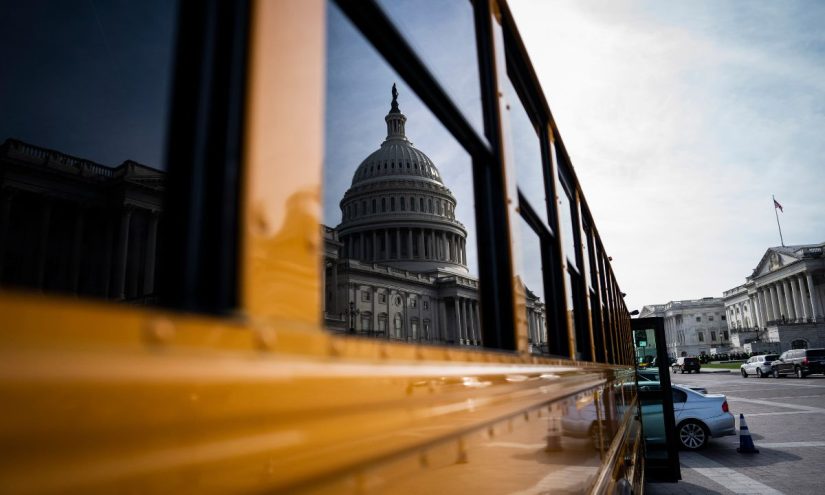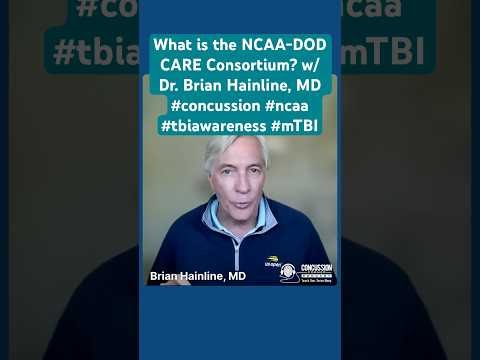If you’ve heard Jacqui Smith interviewed since she became minister, you’ll know that she’s been saying that the Skills and Post-16 White Paper has been nearly ready for quite some time.
It may well be the case that most of the contents of the paper have been pretty much locked in for a good while, with others added to the work in progress as the need became apparent.
And it isn’t just a Department for Education thing. Every part of government will have had an input, both during the formal “write round” that has just concluded and earlier in policy development. The launch will be in the government’s grid – lines will be agreed across Number 10 and the Cabinet Office.
And there will be a story to tell. Which is where we find our problem.
Big P
The most common criticism leveled against Keir Starmer, by his own party more than anyone, is his inability to sell a big picture. Starmer, like many attracted to public policy and public service, is into details, implementation, and delivery. If five to ten years ago our politics was dominated by grand narratives (Brexit, the whole Boris Johnson thing, Liz Truss’ persecution complex), Sunak and Starmer both came to power with more than a whiff of “the grown ups are back in the room”. Delivery rules, ideology drools.
There’s any amount of polling that suggests much of the frustration among voters is due to things just not working as well or as smoothly as they should. From getting an appointment with a GP, to getting support for a child struggling at school, to getting a dangerous pothole fixed it can feel like the UK is riven with structures and processes on the point of collapsing.
A part of this is underinvestment – since 2010 funding for local government (which is responsible for the potholes and the pupil support) has collapsed, while growing funding for the NHS (which is responsible for the GP) has not covered increases in demand and has been blunted by numerous top-down reorganisations.
But a part of this is an inability to do the hard yards on delivery, something which Starmer and Labour are keen to fix. Admirable intentions, but it is much harder to explain to people that we are at the start of a long, complex, and difficult process of renewal than to make absurd promises, stir up xenophobia, and have people believe that these days you can get arrested and put in jail just for saying you are English.
Even delivery needs a story. Tony Blair, for all his myriad faults as a human being, was your archetypal get-you-one-that-does-both. But that is a rare skillset. The rest of us flounder making dull but important stuff sound interesting and inspiring.
And so the story begins
The opportunity mission in the Labour election manifesto highlighted a focus on improving the life chances of children, right the way through from pre-school to entering the workforce. In government, the formal measure of the success for this area of work is the proportion of young people in education or employment-with-training, and the number achieving higher level qualifications.
Sounds like a set of indicators in need of a target? It doesn’t take a huge strategic leap to read across from this to the Prime Minister’s announcement at conference: a target of around 60 per cent (or two thirds, it all depends which announcement you read) of young people in higher education or a “gold standard” apprenticeship.
That’s not a target that, if read strictly by the numbers, has much to do with “widening access” as traditionally described: there’s no sub-targets for young people from disadvantaged backgrounds. For that we look at Bridget Phillipson’s preview of the decision to reintroduce targeted grants (ignoring for the moment the plan to fund them via an international student fee levy).
But this is unlikely to be the only intervention that is aimed directly at widening access. We know now that V levels – a BTEC-esque option that will sit between very academic A levels and apprenticeship-like T levels – will add another option to the choices offered aged 16, hopefully keeping more people in education for longer.
Even though the opportunity mission focuses on young people, we also know that the government is concerned with what we might call “adult skills”. Over in the economic growth mission is where find all the stuff about Skills England and training providers. What we don’t find – even though it by rights should be there – is the Lifelong Learning Entitlement, a Boris Johnson policy of letting adult learners access student loan style finance which ended up accidentally re-writing the entire basis of student loan finance.
Another Johnson-era policy that plays in here are the Local Skills Improvement Plans (LSIPs), which help local employers ensure that their prospective employees are given the opportunity to develop the skills they need. Supposedly Skills England adds the national perspective on these local plans, helping to design identified skills needs into wider initiatives like apprenticeship standards and qualification design.
Universities and higher education don’t exactly jump off the page of either of these missions. Accordingly, policy interventions in the sector have been minimal. The inflationary fee increase was a simple matter of letting existing information work in the way it was originally intended. The changes to implementation of the Higher Education (Freedom of Speech) Act was simply a matter of removing the actually insane components of an otherwise largely pointless piece of legislation.
Vote reform
But there was another early intervention – a letter from Secretary of State Bridget Phillipson that has become known as the “HE reform” agenda (not to be confused with the “HE reform” consultation from 2022, that almost established student number controls based on minimum eligibility requirements). It was a series of asks for the sector, perceived as a quid pro quo for the return of the inflationary fee increase.
In essence this had five components. Let’s use the minister’s exact words:
- Play a stronger role in expanding access and improving outcomes for disadvantaged students
- Make a stronger contribution to economic growth
- Play a greater civic role in their communities
- Raise the bar further on teaching standards, to maintain and improve our world-leading reputation and drive out poor practice
- Underpinning all of this needs to sit a sustained efficiency and reform programme
What’s interesting here is the absence of targets. Phillipson wants a stronger role, a stronger contribution, a greater role, a raising of the bar – but how far and how high, and how will she know when she has what she wants? It is a fair guess that we are due some numbers on these aspirations.
The other thing to pull out here is the relationship between the regulator and the government. In England, most of these HE reform requests involves work that sits under the Office for Students (I’m happy to accept written submissions suggesting that Research England has oversight on elements of economic growth and the civic role).
A pattern that I’ve recently been noticing is that OfS and DfE to not appear to be moving in sync at the moment – a DfE consultation on franchise arrangements appeared shortly before a largely unconnected OfS consultation on the same topic, OfS appeared to be startled by the appearance of its own guidance letter, and the biggest thing OfS has done recently – the mega-consultation on quality – appears to have blindsided DfE.
So achieving the HE reform objectives (however loosely specified) also involves regulatory reform. And that regulatory reform appears to be closely tied to the Behan review.
Quality Behan-cement
Towards the end of the last government it was open season on reviewing the Office for Students. The Department for Education conducted a (largely unhelpful) legislative review of the way HERA was working in 2022, which spurred the House of Lords Industry and Regulators committee to foreground some of the more egregious failings of the OfS. The Behan review, which built on the findings of both, was one of the periodic reviews of regulators that usually pass without notice – what was notable was that the review author proceeded to take over as interim chair after the sad loss of James Wharton from public life.
Behan’s review was focused on making regulation work better – focusing on efficacy, accountability, governance, and efficiency. It is the source – for example – of the plans to bring together the Teaching Excellence Framework and the B3 conditions of registration into a single quality assurance system. This modified and expanded TEF will, in future, feed into the eligibility of providers to access certain funds and opportunities – in particular the ability to offer Lifelong Learning Entitlement modules.
Much of Behan was predicated on changes to primary legislation – the contradictions and confusion within HERA was getting in the way of a streamlined regulatory approach. We’ve been over some of the possibilities of tidying up legislation on the site before – it’s niche stuff unlikely to raise pulses outside of Wonkhe’s most devoted readership. And it would be a brave government that promoted a glossy higher education and skills bill devoid entirely of policy – imagine, given the mess the sector is in, trying to front out legislative proposals that basically amount to letting the OfS board choose the chief executive rather than the secretary of state?
The question of regulation has also hit the headlines with an onslaught of problems with franchising. Currently students can be registered at one provider and taught elsewhere, with the quality of that teaching (and the outcomes experienced by those students) falling outside of the OfS’ ambit. There are both OfS and DfE proposals designed to address this issue – a DfE consultation required that teaching partners over a certain size needing to be registered with OfS, and an OfS consultation called for new conditions of registration for registering partners.
The frustration is palpable – with DfE recently called out by the courts for riding roughshod over due process in order to censure Oxford Business College, and the National Audit Office calling on OfS, DfE, and the Student Loans Company to get their act together in addressing instances of student loan fraud. The regulatory toolkit is simply not up to the job.
Fun with funding
OfS, meanwhile, has very much been thinking about funding – a quietly radical change to the collection rules for HESES (the means by which we get the student number information that underpins most of the remaining direct OfS grants), adding in some very detailed information on subjects, prefigures a forthcoming consultation on how it uses the money (just under £2bn) it still allocates for high-cost subjects and student premiums.
Any subject based approach, when it appears, will surely be informed by the government’s own list of priority subjects – found (again) within the eligibility rules for the LLE, and ported across to the eligibility of some students from deprived backgrounds for new maintenance grants. For all the talk of a data-driven Skills England, and detailed information on precise employer demands, the list is broad. We’re broadly in STEM world, plus architecture (but not landscape gardening), nursing and allied health, and economics. And not medicine.
Meanwhile, university finances have reached the stage where the only reliable source of income is via recruiting international students. This approach took a knock with changes to dependent visas for most students, but now the government has decided that it wants a slice via a levy – which will be used (in part) to support these new maintenance grants.
With both provider and student finances at breaking point (genuine financial hardship, attrition, job losses, course cuts), there doesn’t appear to be any appetite for a meaningful rethink of funding in either case. Despite everyone yelling about nothing else since the pandemic, it appears to be the one thing that is definitely off the table in the short to medium term.
Pieces of paper
A white paper is a consultation – it is a selection box of policies and plans pulled together to present the next chapter of the government’s narratives on opportunities, skills, and the economy. It will certainly contain measures designed to address the knotty technical and implementation issues described above, but it also requires an element of vision.
On one level, there is clearly a – very broad – skills vision. The language of opportunity, and of parity of respect for academic and vocational routes, is a rich and resonant one. It is no coincidence that every UK government for the past decade as used a version of this narrative, and it has been duplicated (with a few tweaks) across the ideological spectrum precisely because it is so powerful. However, an increasingly prominent component of this story has been positioned as a critique of the current state of affairs, and the plight of our universities and wider higher education sector. Despite the diversity of the sector, it is specifically universities – and a particular, largely inaccurate popular perception of universities – that are being seen as a problem on the way to a skills-led solution rather than an underfunded and struggling keystone.
While the policies over every party have elements of this counter-narrative too – the Labour variant is perhaps kinder than the alternatives (see, for example, Badenoch). But it is not a full-throated defence of the sector. It is not simple or straightforward to draw together the various things Labour has done in the higher education space and tell a convincing story that includes a theory of change and a desired end state.
So, while it is fairly straightforward to parse the hints and directions of travel that the past 18 months have brought into a series of likely next steps, the fact that none of these steps do much to inspire suggests that this can’t be the whole story. If it was, we’d be looking at a series of uncontroversial pieces of secondary legislation and some changes to the regulatory framework.
The format of a white paper demands a little more.










